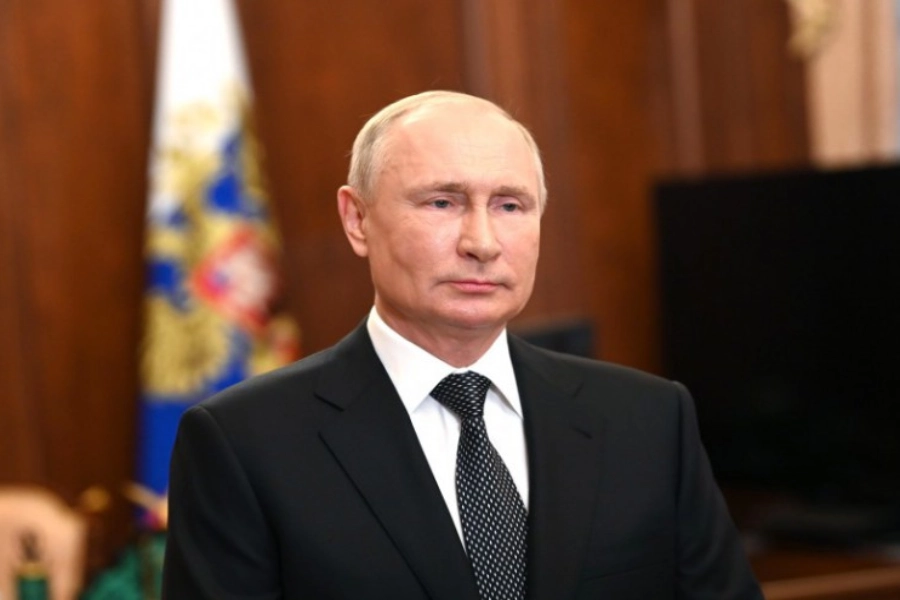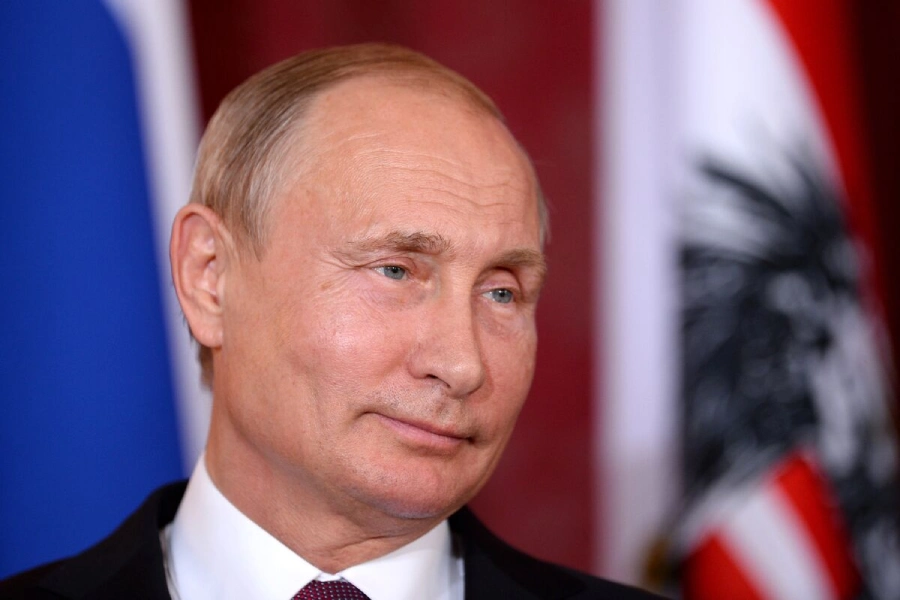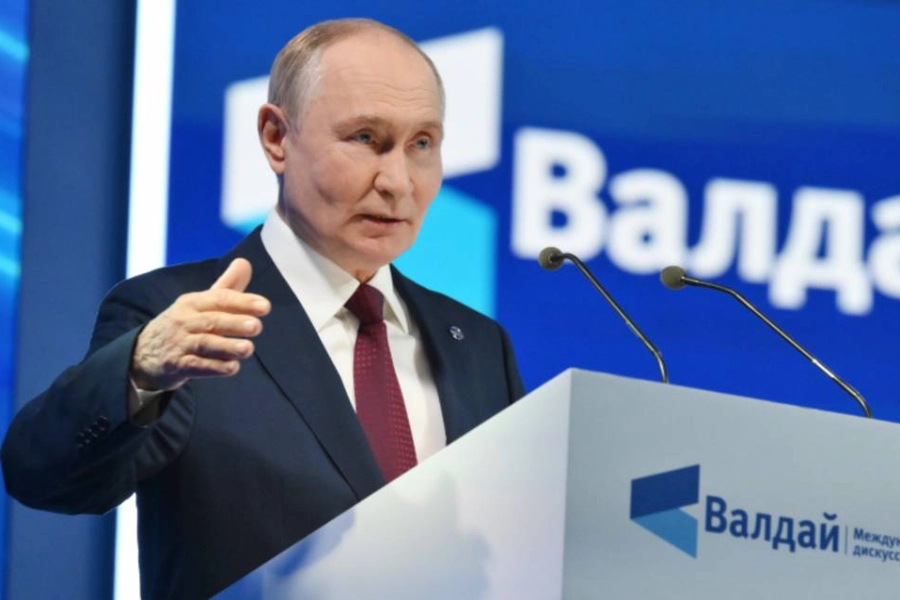Vladimir Putin’s rhetoric has intensified in recent months, warning Europe of a “harsh response” to NATO’s growing militarization. He claims that countries like Germany are preparing their militaries to become “the strongest in Europe,” a move he views as provocation.
From a legal standpoint, these remarks test the scope of NATO’s Article 5, which binds members to collective defense. While Article 5 was designed for direct armed attacks, Putin’s reliance on hybrid warfare cyber operations, drone incursions, sabotage blurs the legal threshold. The ambiguity gives Putin space to escalate without formally triggering NATO retaliation, while NATO lawyers debate whether such acts constitute an “armed attack” under international law.

Vladimir Putin, U.S. War Powers, and Escalation Risks
The United States has become central to the debate over Putin’s aggression. Reports confirm that President Trump approved intelligence sharing that allows Ukraine to strike Russian military positions. Additionally, discussions on transferring Tomahawk missiles have fueled Putin’s warnings that such weapons cannot be used without U.S. personnel.
Here the War Powers Resolution of 1973 becomes crucial. It requires the president to obtain congressional approval for sustained military involvement. If American forces directly operate or support these weapons in Ukraine, U.S. law could classify this as active participation in war. For Vladimir Putin, this provides an opportunity to frame the U.S. not as a supporter but as a belligerent—an argument he uses in his domestic propaganda.
Vladimir Putin and International Law on Nuclear Facilities
Perhaps the most alarming element of Vladimir Putin’s threats concerns Ukraine’s nuclear plants, especially Zaporizhzhia and Chernobyl. International humanitarian law, notably the Geneva Conventions and Additional Protocol I, explicitly prohibits attacks on civilian infrastructure with catastrophic risks.
Putin’s suggestion that Russia could retaliate against Ukraine’s own nuclear plants if strikes continue is a direct challenge to the Convention on the Physical Protection of Nuclear Material. Legally, such statements qualify as “threats of force,” prohibited under Article 2(4) of the U.N. Charter. Beyond legality, these threats risk widespread ecological and humanitarian disaster, drawing condemnation not just from NATO but from neutral states reliant on nuclear safety norms.
Vladimir Putin, Prisoners of War, and Human Rights Violations
In Kupyansk and other contested areas, reports claim Russian troops have executed civilians, forced women and children into dangerous zones, and used noncombatants as human shields. These actions violate the Third Geneva Convention and the Rome Statute of the International Criminal Court (ICC), which classifies them as war crimes.
While Russia has engaged in occasional prisoner swaps—such as the recent exchange of 185 prisoners—Putin’s forces are accused of perfidy and unlawful detainment practices. These actions undermine Russia’s credibility in future peace negotiations and increase the likelihood of international legal proceedings against Russian military leaders.
Vladimir Putin’s Propaganda Machine and Hybrid Warfare
Propaganda remains a central pillar of Vladimir Putin’s strategy. By exaggerating Russia’s territorial control in Kupyansk—claiming two-thirds when independent observers confirm only 14 percent—Putin attempts to create a perception of inevitable victory.
This “information warfare” complements Russia’s hybrid tactics. Legally, disinformation itself is not prohibited, but when combined with violations of humanitarian law, it strengthens cases of state responsibility. Moreover, propaganda targeting NATO as aggressors serves Putin’s domestic audience, consolidating power by presenting Russia as a victim rather than an aggressor.

Vladimir Putin, Sanctions, and Economic Law
Another critical dimension of Putin’s confrontation lies in economic sanctions. The U.S. and European Union have imposed sweeping restrictions on Russian banks, energy exports, and technology transfers. While Putin calls these measures “illegal,” most are consistent with international law when justified under Article 41 of the U.N. Charter (non-military enforcement measures).
For Russian businesses and oligarchs, these sanctions mean frozen assets and restricted travel, raising questions of property rights and due process. In U.S. courts, challenges to sanctions are increasingly common, but legal precedent overwhelmingly favors the government’s national security interests.
Vladimir Putin and International Courts
The International Criminal Court (ICC) has already issued arrest warrants for Russian officials accused of war crimes, and Vladimir Putin himself is under investigation for the unlawful deportation of Ukrainian children. Although Russia does not recognize the ICC’s jurisdiction, these proceedings restrict Putin’s international movements. Any travel to ICC member states could legally result in arrest, shrinking his diplomatic options.
The growing body of evidence linking Putin to direct war crimes increases pressure on neutral countries to distance themselves from Moscow, reinforcing Russia’s isolation in global legal institutions.
Vladimir Putin, Energy Law, and Europe’s Dependency Crisis
Another overlooked legal aspect of Putin’s war is energy. By weaponizing natural gas supplies, Russia has violated long-standing commercial contracts with European states. These breaches raise questions under international trade law and bilateral investment treaties.
In response, Europe has accelerated its transition to renewable energy and diversified suppliers. For lawyers, the debate now centers on arbitration cases over broken energy contracts and whether states can invoke “force majeure” during wartime. Putin’s manipulation of energy policy thus extends his conflict into the legal and economic spheres.
Vladimir Putin and the U.S.-Europe Divide
Putin’s strategy often seeks to exploit differences between Washington and European capitals. He praises Trump as “a person who can listen” while condemning European leaders as hysterical. This divide-and-rule approach aims to weaken NATO unity.
Legally, the U.S. supports Ukraine’s self-defense under Article 51 of the U.N. Charter. But in Europe, constitutional courts and parliaments must balance commitments to NATO with domestic political pressures. The legal debate centers not just on defense obligations but also on democratic accountability in foreign policy.
Conclusion
Vladimir Putin’s threats are not merely political theater—they are reshaping the global legal order. From NATO’s collective defense to nuclear safety law, Geneva Conventions, sanctions, and energy contracts, every move he makes is scrutinized through multiple legal frameworks.
While Putin seeks to project power, the international community increasingly documents, prosecutes, and counters his actions with legal tools. Far from being untouchable, Vladimir Putin faces a growing web of accountability that could define his legacy more than any battlefield gain.
FAQ
Q1: How does Vladimir Putin challenge NATO legally?
By using hybrid warfare tactics like drone incursions, Putin tests whether such actions qualify as “armed attacks” under NATO’s Article 5.
Q2: Is Vladimir Putin violating nuclear law?
Yes. Threatening nuclear plants violates Geneva Conventions and nuclear protection treaties.
Q3: What is the U.S. legal limit in supporting Ukraine?
Under the War Powers Resolution, U.S. presidents cannot commit troops without Congress. Providing Tomahawk missiles risks crossing this line.
Q4: Why is Vladimir Putin targeted by international courts?
The ICC investigates him for war crimes, including the deportation of Ukrainian children, restricting his international legitimacy.
Q5: How do sanctions affect Vladimir Putin legally?
Sanctions are lawful under U.N. Charter Article 41. They freeze assets, restrict travel, and test Russia’s economic resilience.

